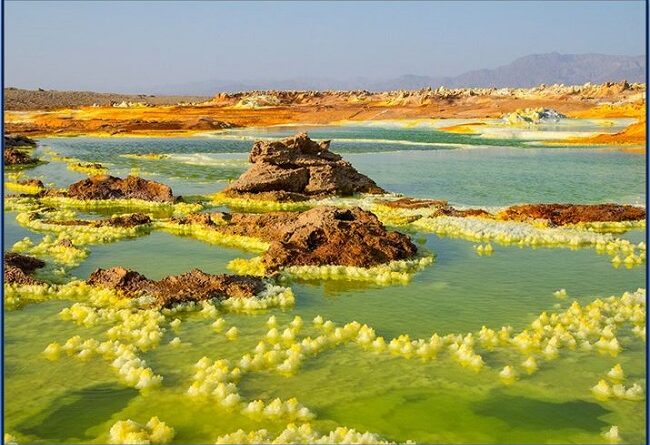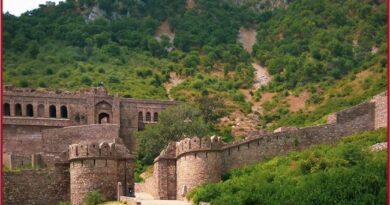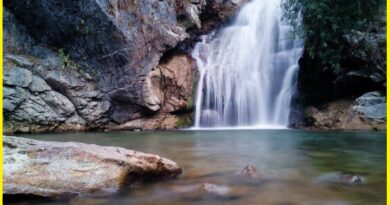The Danakil Depression, Ethiopia: The great East African Rift system
The Danakil Depression, Ethiopia
From Tanzania to Eritrea, the earth is being wrenched apart along the Great Rift Valley and will one day form a new ocean. Volcanic activity abounds along this rift, particularly in the Danakil Depression. The area is located in the Afar Region of northeast Ethiopia near the border with Eritrea. The climate here can only be described as cruel. But against all odds, people do live here. The Afar people call it their home.

The dramatic region is home to more than thirty young volcanoes, sulfurous yellow hot springs, and otherworldly salt plains. before traveling, here be careful as this is a geologically and politically volatile area.
The Sun scorches the cracked earth, a wavering mirage confuses the eye, and dry air and dust suck the moisture from your mouth and eyes. Ethiopia’s Danakil Depression is one of the hottest, driest, and lowest places on the planet.

The Danakil Depression is the northern part of the Afar Triangle, a geological depression caused by the Afar Triple Junction: a place where three tectonic plates join. The Depression overlaps the borders of Eritrea, Djibouti, and the entire Afar Region of Ethiopia.
Geographically, it is part of the African Rift which extends from the African rift lakes of Malawi and Tanganyika, up through the Red Sea, and into the Dead Sea of Jordan and Israel. It is an extreme desert located below sea level, with temperatures that reach 50°C on a regular basis.

Geothermally heated groundwater rises from the Earth’s crust to the surface, accumulating in the Dallol crater. This creates spectacular and colorful hot springs that are extremely acidic and salty. The area is also characterized by toxic sulfur and chlorine vapors as a result of natural degassing volcanic processes.
Geological History-
Formation of Danakil depression-
Danakil depression consists of geothermal activity because the area is also home to a volcano with one of the largest, open pits of exposed magma in the world. The Depression is known as the hottest place on Earth. It’s classified as a hyperarid climatic zone and is consistently hot throughout the year.
With a length of 40 km and a width of 10 km, Danakil Depression lies between 150-100m below sea level. It’s therefore one of the lowest land areas on Earth. The Dallol volcano, in the northern part of the Danakil Depression, was formed in 1926 by a phreatic eruption. Dallol is a cinder cone volcano in the Danakil Depression. It has been formed by the intrusion of basaltic magma into Miocene salt deposits and subsequent hydrothermal activity. This is when groundwater is heated by magma essentially, a steam eruption without the lava ejection. Dallol has an elevation of approximately 50m below sea level.
The East African Rift System-
This East African Rift System (EARS) is one of the geologic wonders of the world, a place where the earth’s tectonic forces are presently trying to create new plates by splitting apart old ones.
In simple language, a fracture or rift in the earth’s surface widens over time, or more technically, as an elongate basin bounded by opposed steeply dipping normal faults.

You can see the new plate-to-be; the Nubian Plate makes up most of Africa, while the smaller plate that is pulling away has been named the Somalian Plate. These two plates are moving away from each other and also away from the Arabian plate to the north.
This harsh environment was created by the splitting apart of the old African Plate into two plates – the Somali and Nubian plates. In millions of years, these two plates will be definitively separated and a new ocean basin will form.



